How to sell complex products and services (Part 1)
(By the way, to get articles like this free in your inbox, subscribe to our newsletter.)
Part 1: How to manage objections, and how to decide whether to use long or short copy
(This is one of a series of articles, the first of which is here.)
When we ask a website’s visitors why they didn’t buy, we hear them say the same things over and over again. Lack of trust comes up a lot, as does lack of understanding, and inability to find a suitable product.
However, some objections aren’t widespread—they are product-specific. For example, there might be a hundred reasons why a buyer isn’t ready to buy customer-relationship-management (CRM) software, and each of the reasons is specific to CRM software. Each objection has to be tackled individually. What can you do if your visitors have tens—or even hundreds—of different objections?
This is where conversion gets hard. For a marketer who was hoping just to add a few testimonials and a guarantee, the problem can seem overwhelming. It can only be solved by a combination of process, diligence, and skill.
If your business has many different objections, this article (and the next two) describes how you can overcome every objection, and hugely grow your profits.
Step 1: How to manage many objections (and counter-objections)
Elsewhere, we describe how you should use our lists of tools and questions to research your visitors’ objections. To manage all the responses, it helps to create what we call an “O/CO” table—a table with two columns, one for objections and the other for counter-objections. Here’s a template O/CO table in Google Docs format (not that you’d struggle to create one of your own).
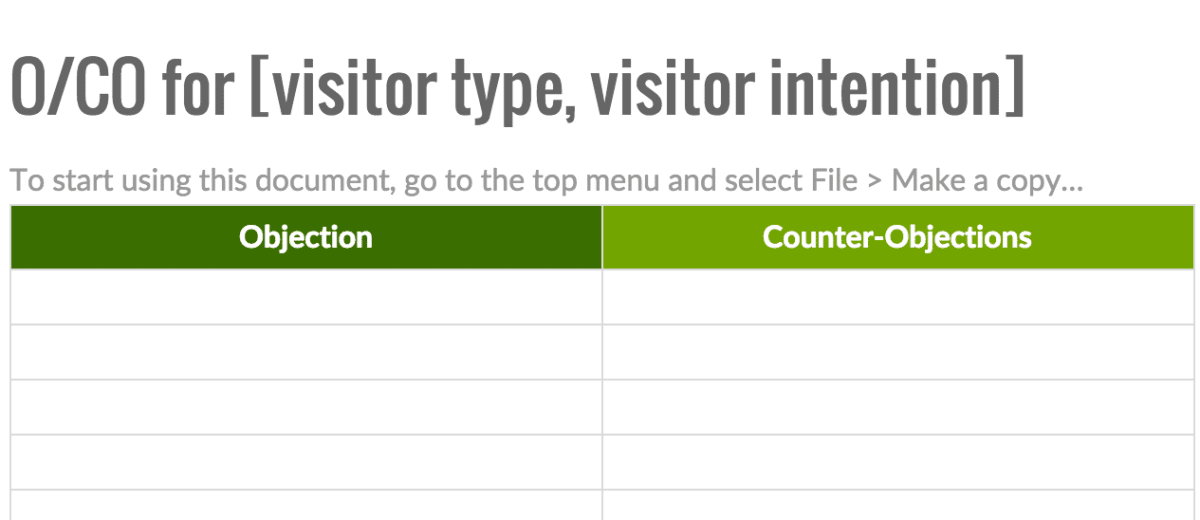
To begin with, the visitor type and visitor intention should be broad—for example, “All visitors to ABC.com.” However, if you work for a large enterprise—T-Mobile, say—it may be something narrower, like “Visitors who are under contract with another carrier, who are looking for an iPhone.”
Into the “Objections” column, add all of your visitors’ objections, as revealed by your research. To make your list more manageable, you may wish to rank the objections by how frequently they get mentioned.
In the “Counter-objections” column, write down the most effective responses you’d give to overcome each objection. You can identify good counter-objections using the following techniques:
- Ask salespeople how they respond to each objection.
- Look through the company’s sales training materials and sales scripts to see whether there are pre-written responses to each objection. (If there aren’t, the table you are creating should be added to the company’s sales training course.)
- Ask live-chat support representatives how they counter each objection.
- See whether the company has “canned responses” for live chat. They can be a goldmine of tested counter-objections.
- Come up with counter-objections yourself. With most companies, this is the most fruitful method. The people who are best at coming up with counter-objections tend to be intelligent, diligent, and have an obsessive knowledge of direct-response marketing techniques, persuasive copywriting, psychology, and usability—all the core skills of conversion rate optimization (CRO).
Step 2: Try to reduce how many words you need, by reducing the commitment. And then use as many words as you need.
Your website will need to contain at least as many words as you’d use when selling face to face.
But this raises an important point. Selling what? If your company makes customer-relationship management (CRM) software, you have a wide choice over what you sell at each stage:
- At one extreme, you could aim to complete everything in one step, selling a three-year enterprise-wide contract for the CRM, with a multi-million-dollar commitment. This may require months of face-to-face meetings.
- At the other extreme, you could sell an instant free trial with no credit card required—and postpone the rest of the selling to a later stage in your conversion funnel. It may take you no more than a minute of conversation to sell a free trial face-to-face.
If you ask for less, you don’t need to use as many words. So it pays to explore how you can redesign your conversion funnel so that each step becomes less commitment. We brushed upon this topic of commitment in the section about hot dogs in this article. We will cover it in more detail when we write about the “costs” side of value propositions.
Of all the possible low-commitment steps, squeeze pages deserve a special mention, because they are particularly effective. A squeeze page is a page designed to capture the visitors’ contact details—often their email addresses. The “submit your email address” field on a squeeze page represents a low perceived commitment to the visitor, but a high value to you as a marketer—because it allows you to lead-nurture the visitor with long copy ad infinitum (or, at least, ad tedium).
Of course, if you lower the commitment at an early stage, bear in mind that you may have simply deferred the commitment—and the persuasion required—to a subsequent stage. Sometimes a free trial of the product or service does that persuasion well. Also, it allows you to capture the visitor’s contact details. Sometimes a free trial doesn’t work, though, especially if the product or software unavoidably requires the user to commit time or resources. (Commitments can include money, work, time, and risk.) Beware of sub-optimizing a particular page only to discover that the problem pops up further down the funnel. A supermarket could get more customers to the checkout by dragging them there—or by closing off the rest of the store—but it wouldn’t increase profits.
For its own products, Amazon does both: It reduces the commitment required from the buyers, by pricing its products aggressively low, and then uses many words.
In many situations, it’s most effective to offer a dual path: to provide direct, low-commitment calls to action, plus long copy. Streak provides a low-commitment way forward (a free install), plus detailed information for those who would prefer it:
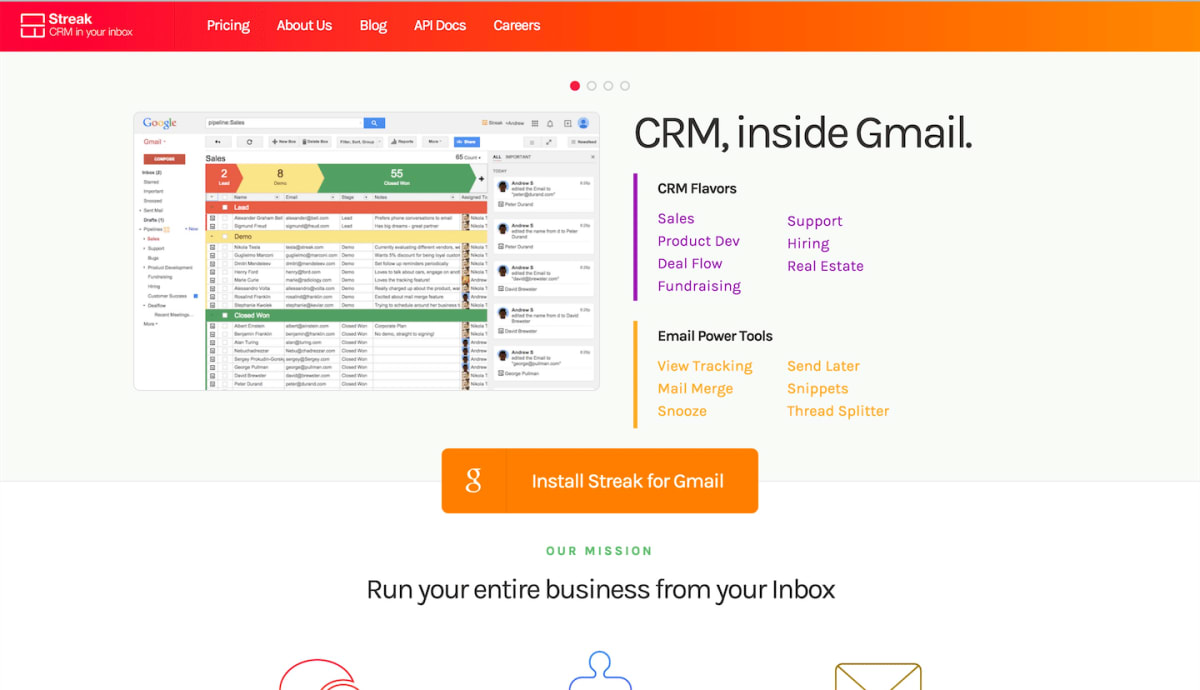
So does Basecamp:
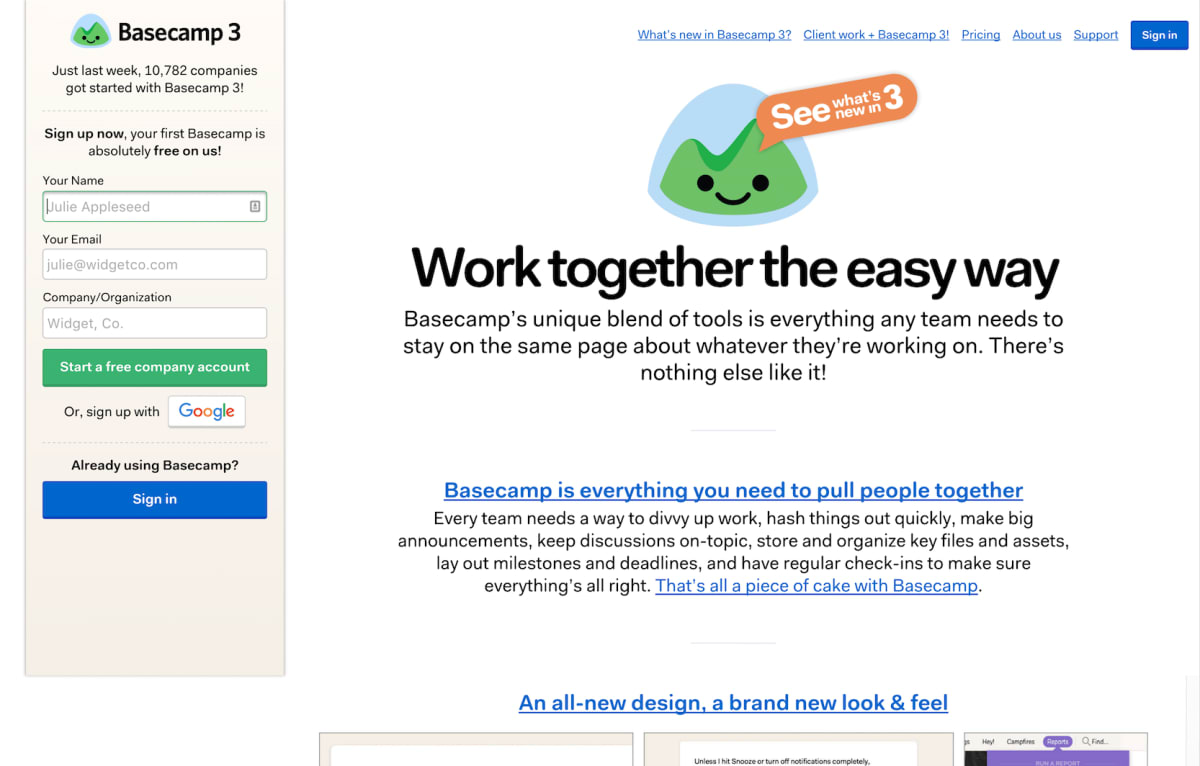
So does Tesla:
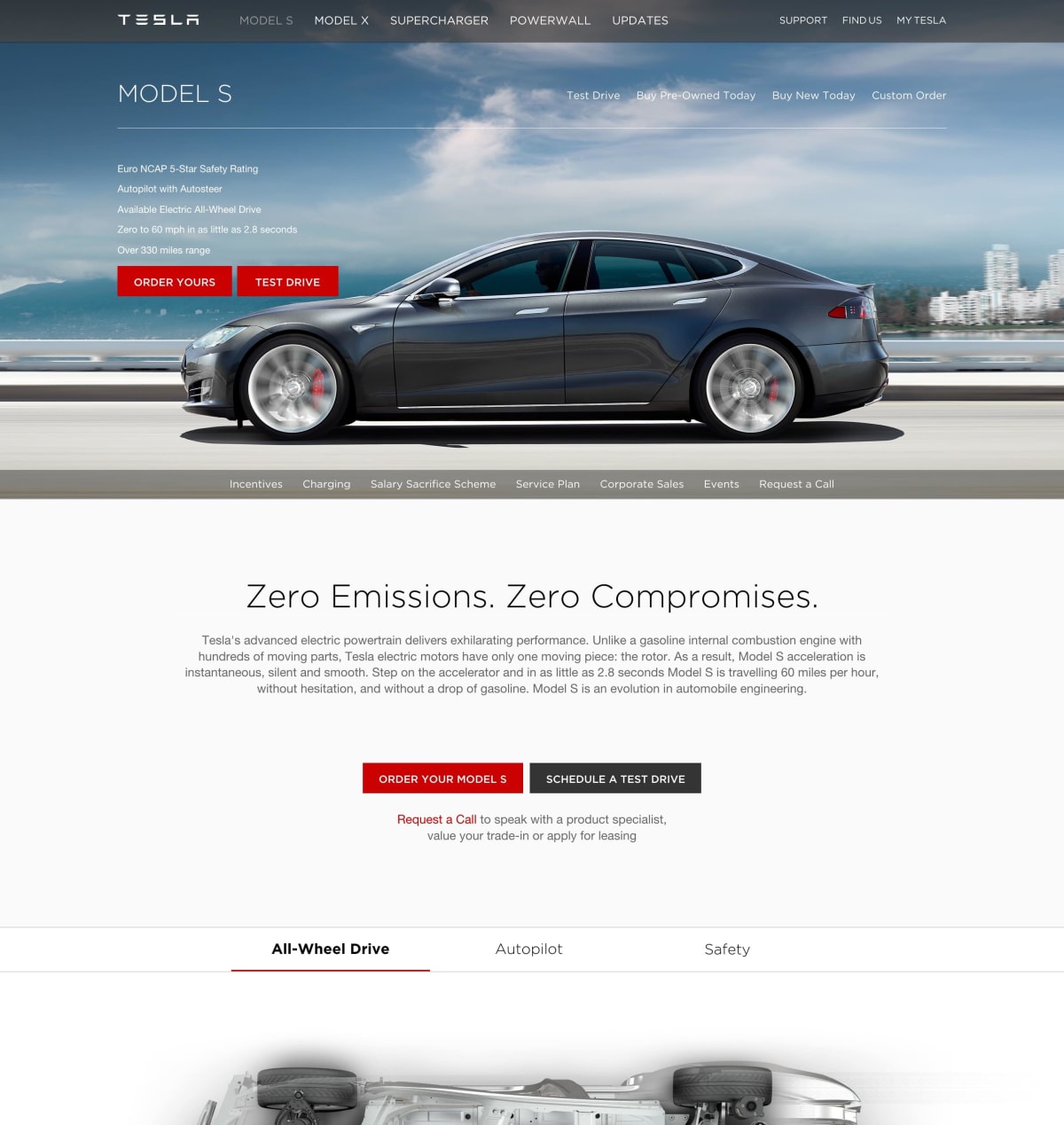
So does Earth Class Mail:
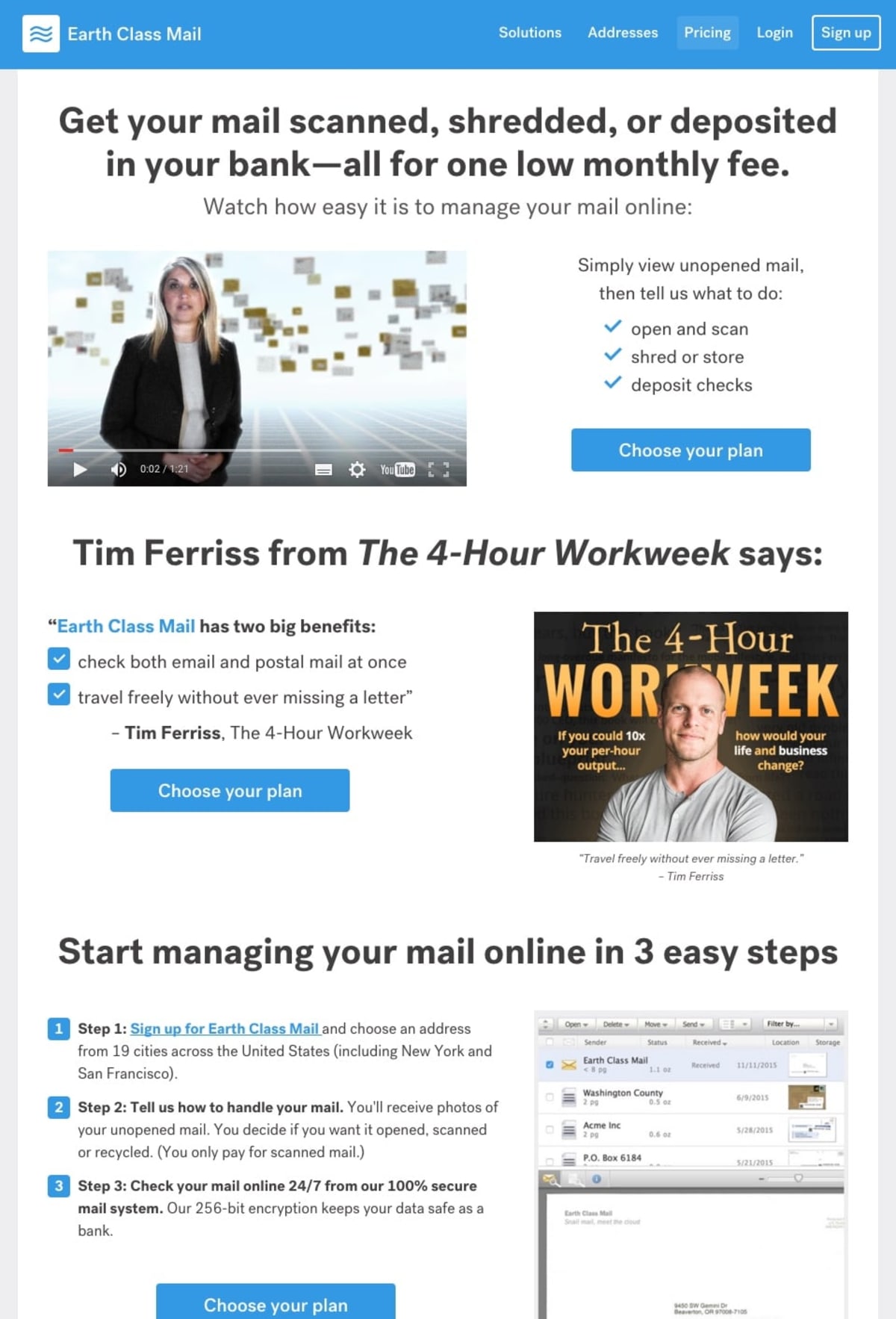
Read the next article in this series
This article is one of a series that began here. The next in the series is here.
How much did you like this article?
What’s your goal today?
1. Hire us to grow your company
We’ve generated hundreds of millions for our clients, using our unique CRE Methodology™. To discover how we can help grow your business:
- Read our case studies, client success stories, and video testimonials.
- Learn about us, and our unique values, beliefs and quirks.
- Visit our “Services” page to see the process by which we assess whether we’re a good fit for each other.
- Schedule your FREE website strategy session with one of our renowned experts.
Schedule your FREE strategy session
2. Learn how to do conversion
Download a free copy of our Amazon #1 best-selling book, Making Websites Win, recommended by Google, Facebook, Microsoft, Moz, Econsultancy, and many more industry leaders. You’ll also be subscribed to our email newsletter and notified whenever we publish new articles or have something interesting to share.
Browse hundreds of articles, containing an amazing number of useful tools and techniques. Many readers tell us they have doubled their sales by following the advice in these articles.
Download a free copy of our best-selling book
3. Join our team
If you want to join our team—or discover why our team members love working with us—then see our “Careers” page.
4. Contact us
We help businesses worldwide, so get in touch!
© 2025 Conversion Rate Experts Limited. All rights reserved.















